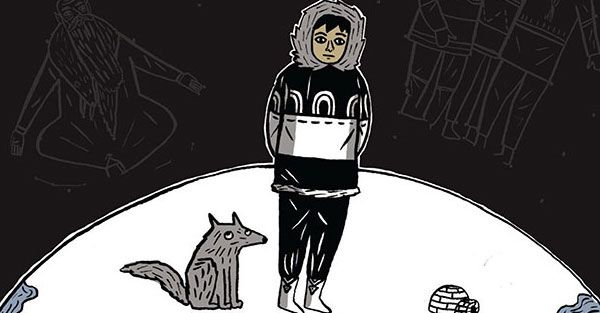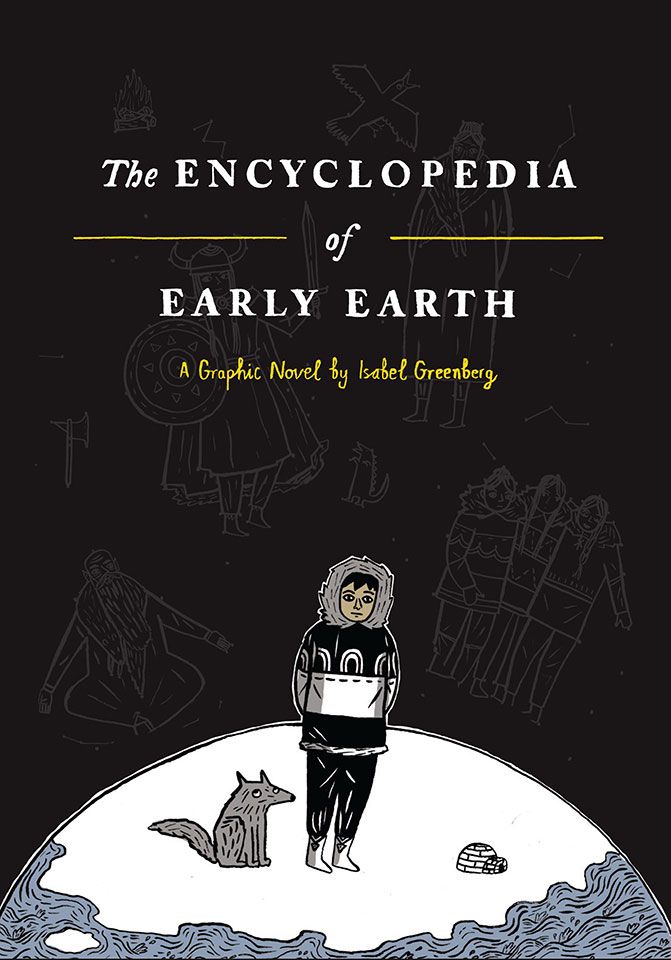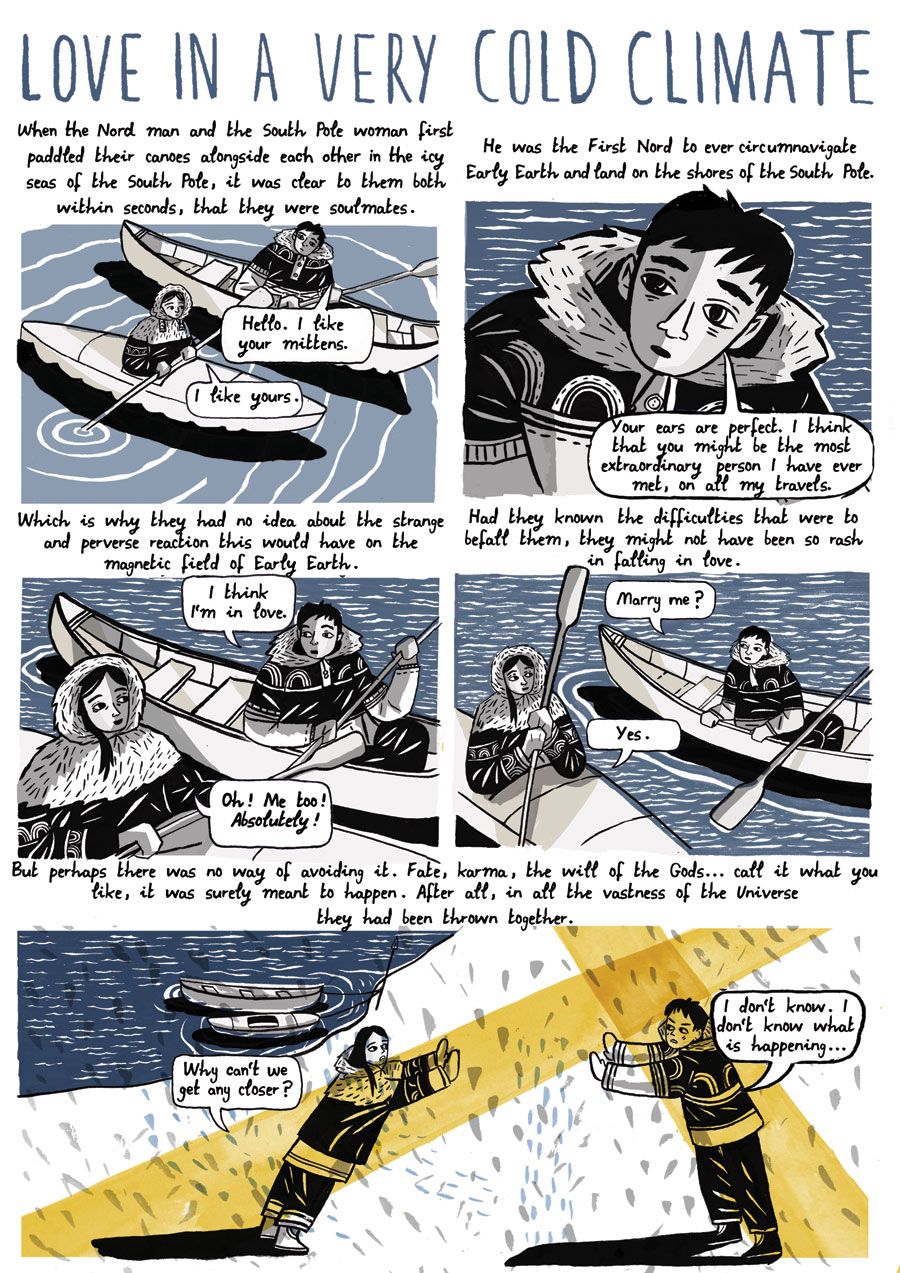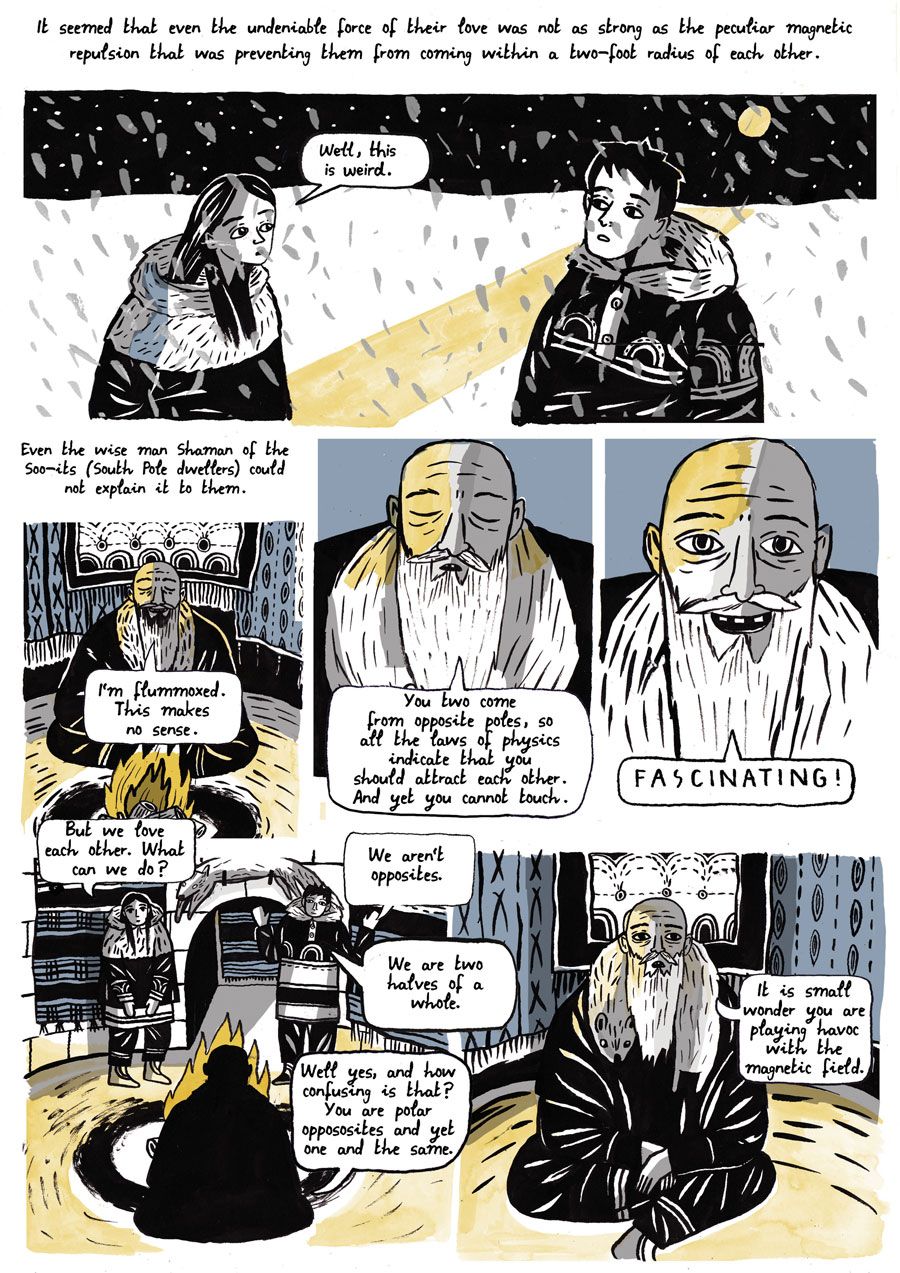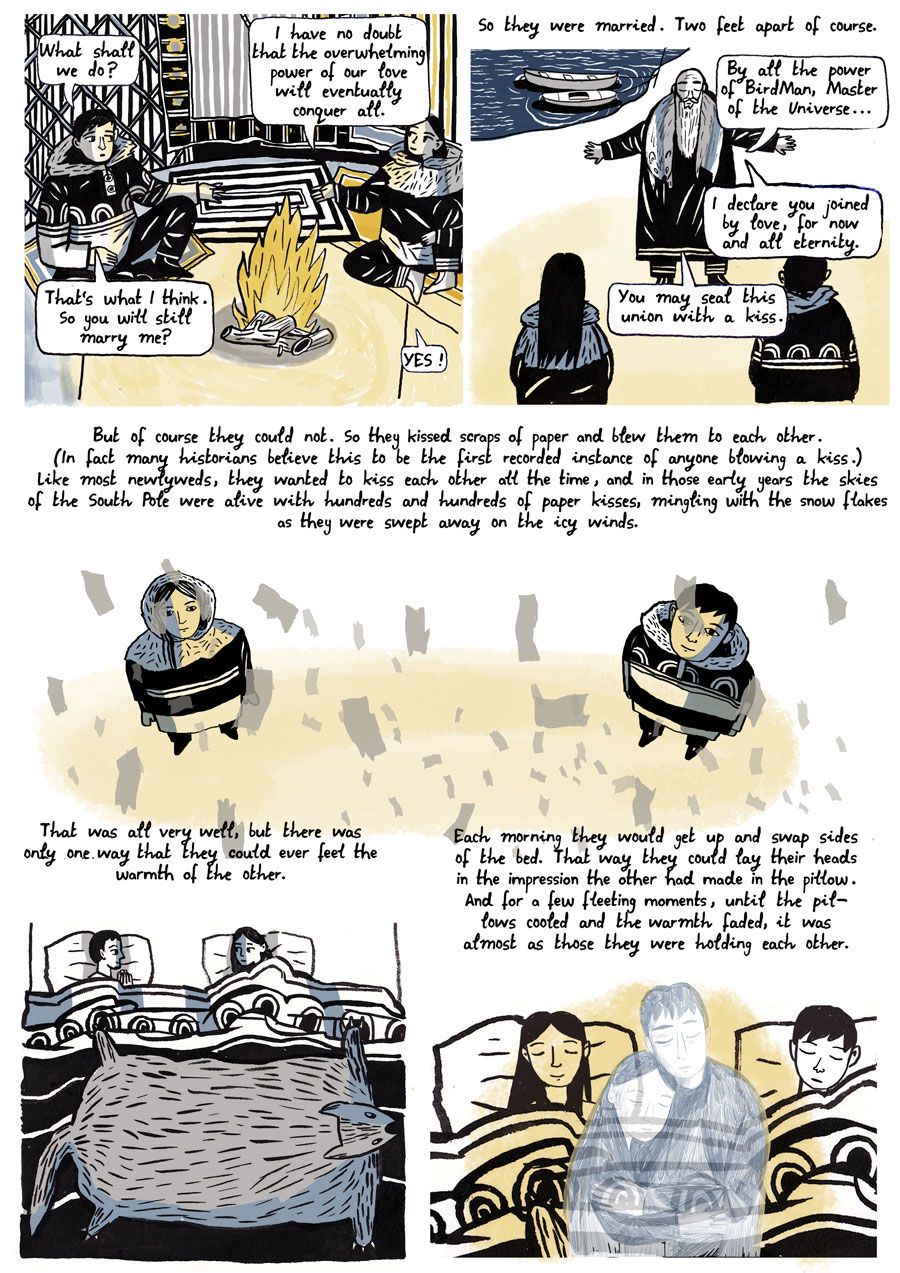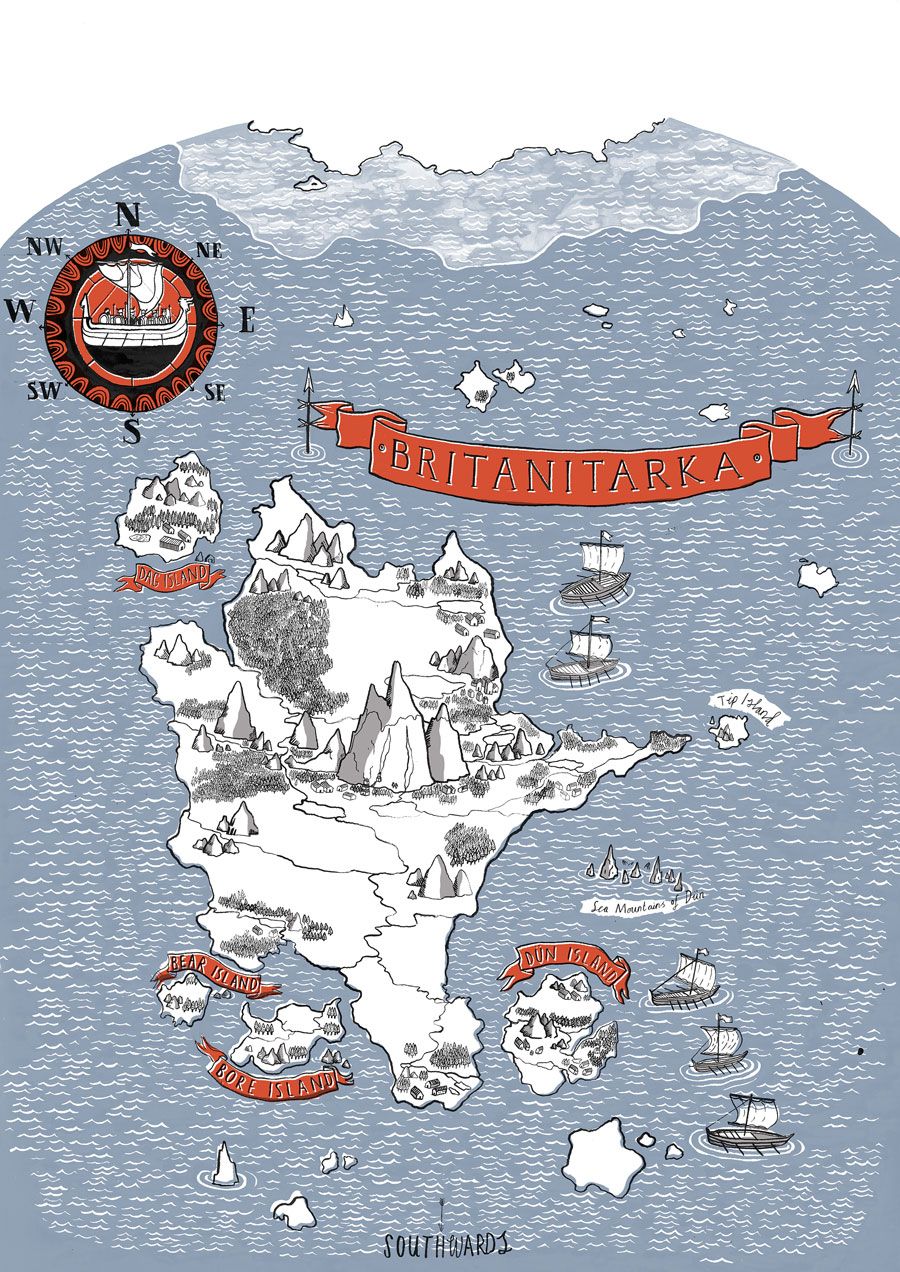When it was released at the very end of 2013, Isabel Greenberg's "The Encyclopedia of Early Earth" very quickly turned its author from a young cartoonist with a first book to one of the most acclaimed of her generation. The book was named by Time Magazine as one of the best books of the year -- not comics, but books -- and it received similar acclaim on both sides of the Atlantic.
Greenberg spoke with CBR about the origins of the idea which would eventually bloom into "The Encyclopedia," the structure of and approach to storytelling in the book, the importance of her work having some sort of emotional impact and what she's working on next.
CBR News: Just to begin, because this is your first book, I was wondering if you could introduce yourself and talk a little about your background.
Isabel Greenberg: I am comic artist, illustrator and writer and I live in North London. I did a degree in illustration which I finished three years ago, and since then, I've been working on my comics. In 2011, I won The Observer/Jonathan Cape Graphic Short Story prize, and that led to me getting a publisher for "The Encyclopedia," which is my first book!
What is "The Encyclopedia of Early Earth?"
"The Encyclopedia of Early Earth" tells the adventures of a storyteller traveling across an imaginary version of our world. As he travels he tells the tales of the places he goes. It's my first graphic novel.
Did you have a model for what you were trying to do with the structure of the book? The final version is many stories and different kinds of stories that layer on top of each other and relate or don't.
The story within a story structure I took from things like "One Thousand and One Nights." I looked at a lot of mythology and folklore from different cultures and pinched the bits I liked! The great thing about those sort of stories is that they really are timeless. That's why I love them. I think that there are certain stories and themes that are fundamentally relevant to everyone; things that we can all relate to on some level, no matter where we come from or what time we were born in. Themes like parents, siblings, jealousy, rivalry and, of course, love, are just fundamentally human.
How did you settle on the tone of the book? I'm thinking in particular about the way you have a classical structure, your art seems to echo older styles, but then there's some contemporary language.
I just wrote how I thought the characters would speak, really! I know some of their language is more contemporary than the narrative voice may be, but I liked the contrast. I was using the format of myths and folklore, and I liked the idea of underwriting the gravitas with a bit of humor. I wanted to keep it funny!
There's been a lot written about how superhero comics are just soap operas with fights, and I think that's true, but I've always thought that a lot of mythology is just soap opera with magic, and you seem to be of a similar mindset.
I think that's definitely true. Myths and legends and folk stories probably were the soap operas of their day, and the themes they explore are no less relevant than they were. There are some stories that are absolutely timeless and some ideas that never get boring that we use over and over. It doesn't matter if the trappings are capes and villains, or magic and forests, if the underlying message is about love, death, betrayal, siblings, jealousy! I love the Greek myths so much because the gods are like ordinary characters. They make mistakes, they interfere, they fall in love -- basically, they act like humans. I actually like some superhero stuff, and I admire the sprawling narratives and the epic world building. I just find it hard to get into I think, because there never seems to be an end point. It's hard to feel sad when a character dies if you know they can be reborn with a time travel plot line or something!
Amidst all these stories and all these ideas and gods and creatures, I'm curious about the challenge of the emotional impact and the emotional arc of the book. How important was that for you?
Very important. I really wanted to create a narrative that people could get into and care about. "The Encyclopedia" was initially going to be much more like, well, an encyclopedia! My original idea was a set of interlinking but unrelated little stories, with more pages of maps and animals and flora and fauna. But once I started writing, I realized I wanted something bigger to bring it all together. I love comics and graphic novels, but I guess sometimes I get far more stuck into conventional novels. I wanted to write a graphic novel that could get people as engrossed as a regular book. I don't know if I achieved that with "The Encyclopedia," but its something I'm working on.
I ask that in part because of my response to the opening story, the love story where they can't touch. Of course, my first thought was, that's not scientifically accurate, but it worked because it was such an emotional and emotionally satisfying story and trying to make the book more than just an encyclopedia and a series of related or loosely connected stories.
Yes, there have been a few comments about the accuracy! But it's a book set in a fantasy world, so I'm the boss! I say in the blurb that the book contains 'BAD SCIENCE,' so hopefully people weren't too disappointed! I just thought it was such a nice idea --
How did you decide on the color palette for the book?
I work a lot in black and white and with limited color, mainly because I am actually quite bad at coloring and find it very hard! But although I was using relatively sparingly in the book, I did try and pick a color palette that helped convey the feeling of whatever place the storyteller was travelling through. In Nord and the South Pole, I used a lot of blues, but I used more wash than block color, to give it an icy, insubstantial feel. In Britanitarka, there are still a lot of blues, but they are more flat color and I put in more grey and flashes of red. In Migdal Bavel, I added some deep oranges and reds and yellow's in, as I wanted the city to have a different feel to it.
To what degree was the style of your artwork and the approach influenced by old maps and encyclopedias and illuminated manuscripts?
Oh, very influenced! I love old maps and illuminated manuscripts, and I have a collection of old children's encyclopedias. Every time I see one in a charity shop or second hand bookshop, I have to buy it.
Do you have plans for more stories set in this world or using this approach?
Definitely. My next book won't be set in Early Earth, though. I do have a lot of ideas, but I want a little break from it for a while, so I'm working on something slightly different. It's going to be based on some traditional English folk ballads. I've got a lot of ideas. The Encyclopedia was a real learning curve, and I'm really looking forward to my next project, applying everything I learnt!
I did want to ask about "Tall Tales and Outrageous Adventures: The Snow Queen and Other Stories." What about the Hans Christian Anderson tales appealed to you?
The Hans Christian Anderson fairy tales came about, really, simply because they are such good stories. I wanted a comic suitable for all ages, and I loved them when I was younger, so I thought, why not!
Finally, can you talk a little about the Museum of Marco Polo and how you got involved in being the chief illustrator?
The Museum of Marco Polo is an online imaginary museum and general ideas place. It's a mixture of essays and stories and articles about museums and imagination and is generally fantastic. I became the chief illustrator partly because I think it's a fantastic site, and I love drawing for them -- but also because its my mum's website!

